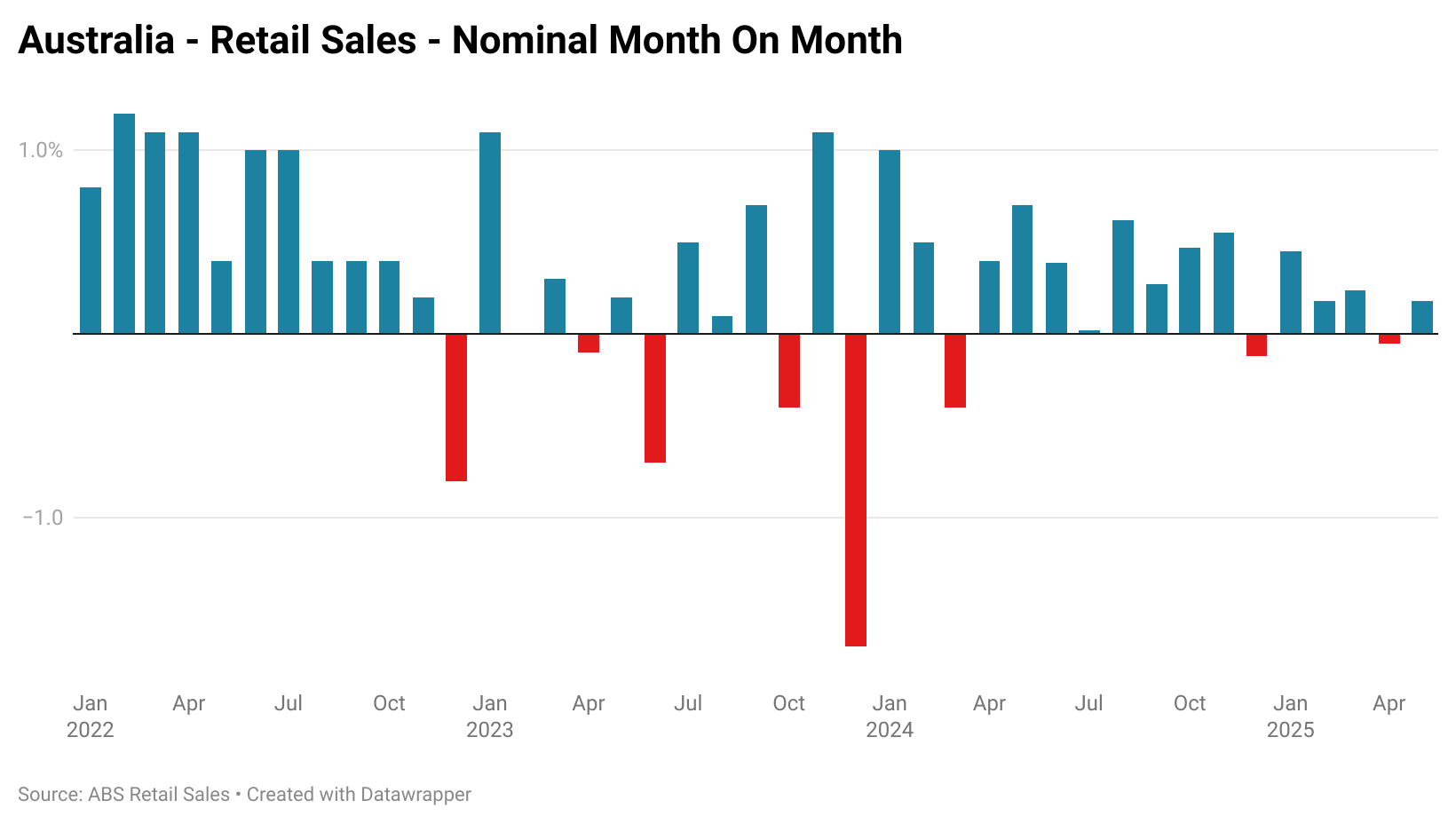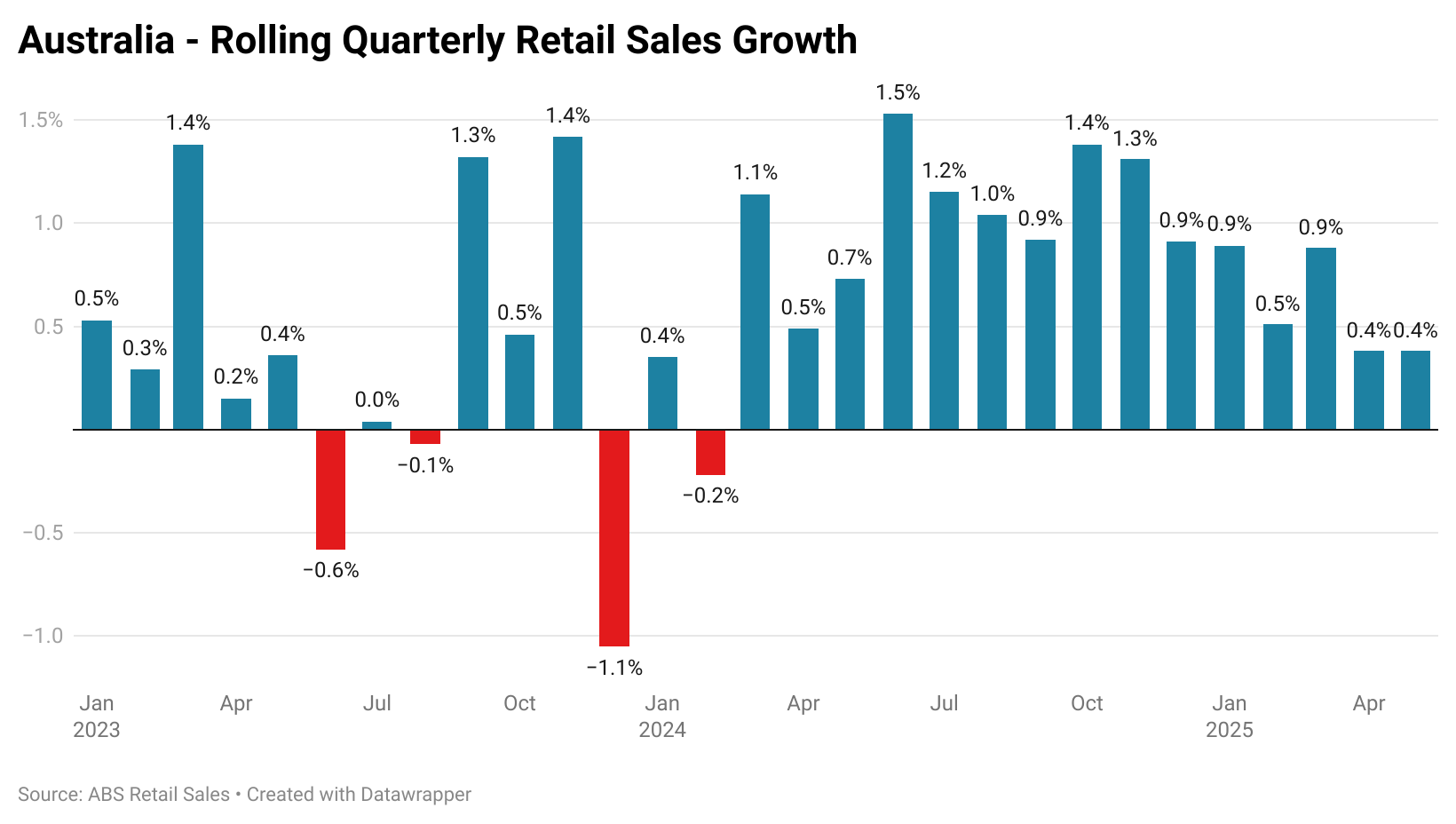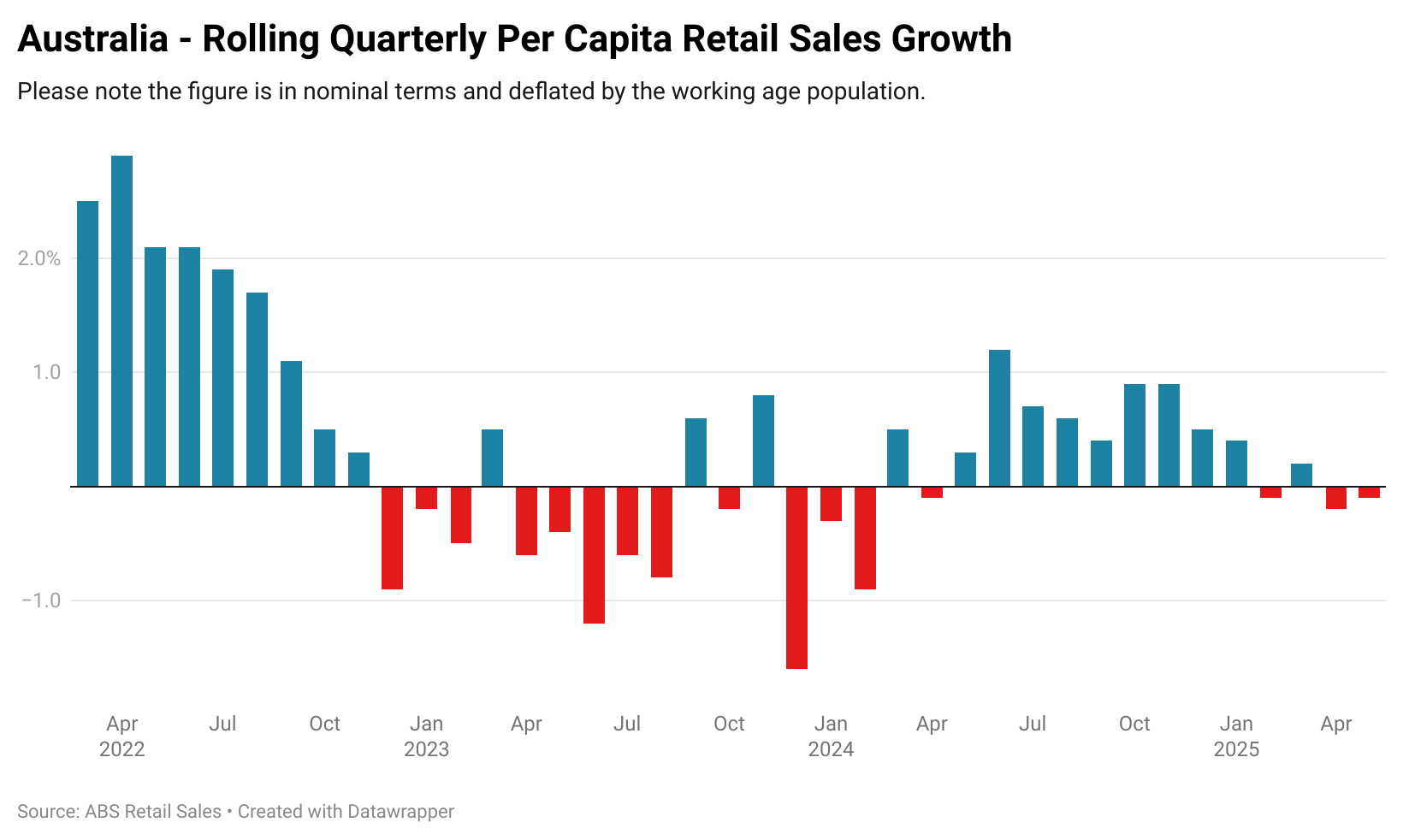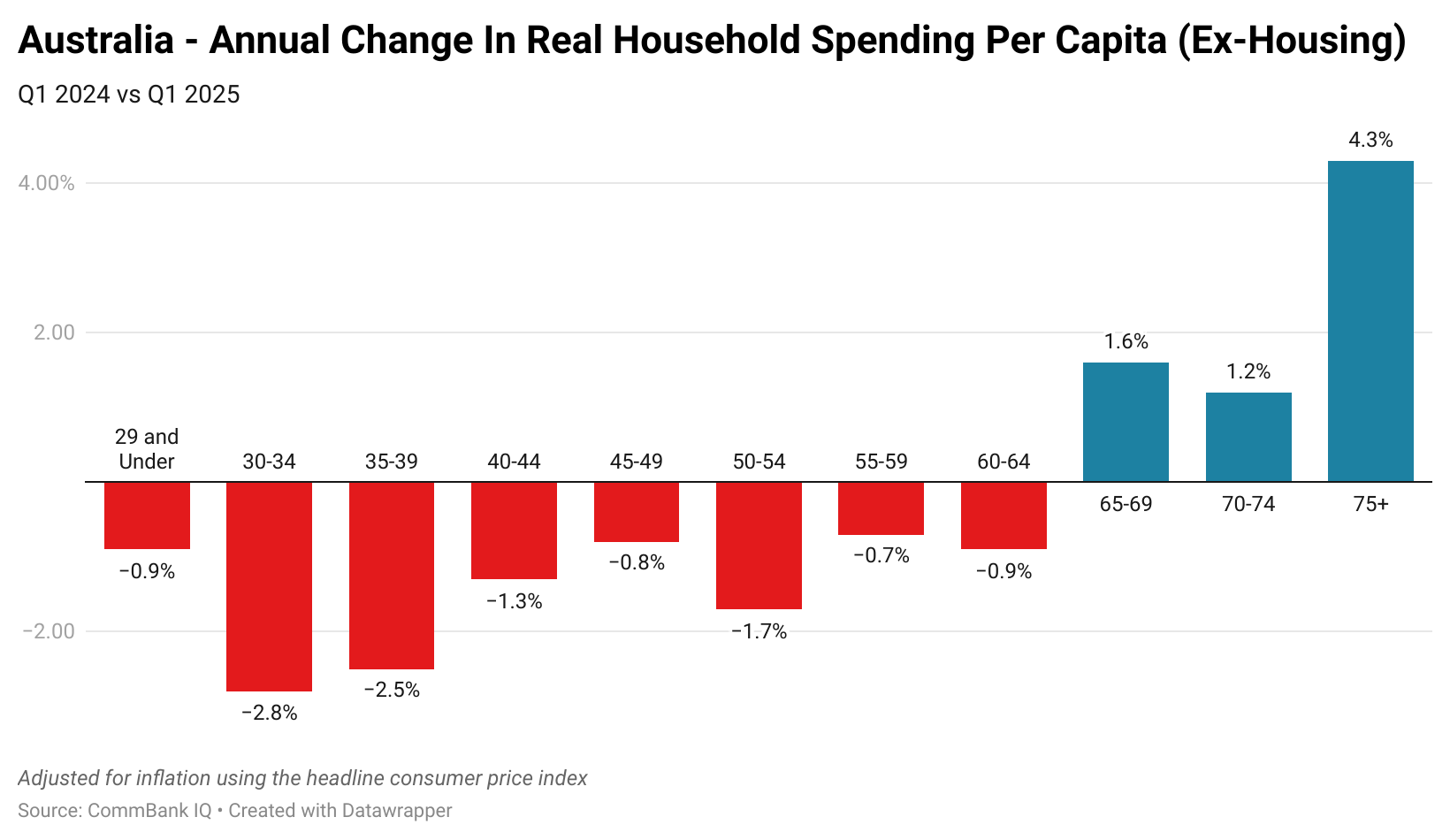In the run up to the latest Australian retail sales data analysts were expecting a sizable +0.4% month on month bounce, after April saw nominal retail sales fall by 0.1% on a seasonally adjusted basis.
In reality, retail sales rose by just 0.18% in May, marking yet another weak report for the nation’s retail economy.

The media release which accompanied the report noted that:
‘Retail spending rose in May driven mainly by a bounce-back in clothing purchases.’
‘Retail spending was otherwise restrained this month, with a drop in food-related spending and flat results across household goods.’
This is very much evident in the breakdown of growth by sub-sector.

If we shift the focus to one of a rolling quarterly view, it’s clear that the retail economy has once again slowed after a better but still historically poor 2024.

Meanwhile, on a rolling quarterly basis, per capita retail sales are once again back in contraction after a somewhat better performance during parts of 2024. It is however worth noting that this is based on nominal retail sales and does not adjust for inflation.

With the release of today’s data, it confirms that it’s likely that the nation’s retail sector has once again returned to recession in real per capita terms.
This echoes the findings of private data providers such as CommBank iQ, which are seeing falling levels of real household consumer spending per capita (ex-housing) across the overwhelming majority of age demographics.

Going forward, the hope of policymakers and the consensus expectation is that the retail economy will bounce back quite strongly as rates are cut significantly and the economy grows out of its current doldrums.
I’m more sceptical of a strong, broad-based recovery in the spending of households, with many still struggling with growing cost of living pressures over headline inflation and others just attempting to claw back the ground they have lost over the last 3 years.

